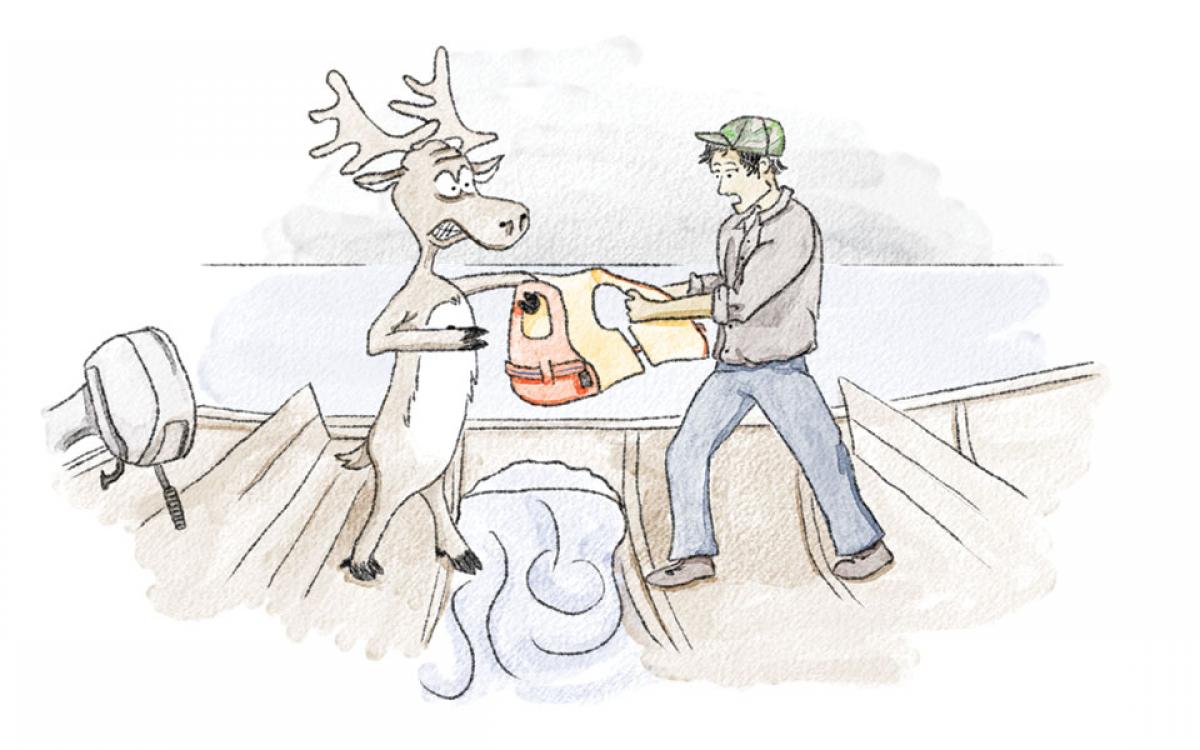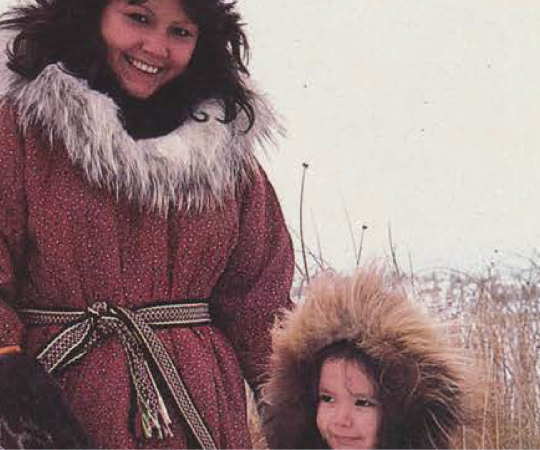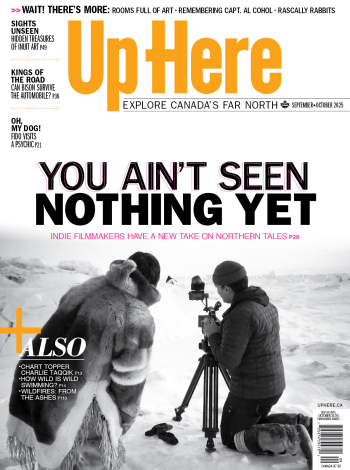We were cutting the ocean pretty good with three bull tuktuit in the 22-foot moosehead boat. This boat was at the end of its life. There were four of us and I never told the guys, but I did feel something just before it happened.
The waters were calm that day, but it was getting late in the season. This time of the year, the bull tuktu is a target for the Inuit. The caribou have been eating well all summer and they’re nice and fat. We had ventured pretty far for this catch.
We spent the night in a tent, so we were well rested. There was ice on the little puddles. We had some tea and bannock and pulled off from the inlet early in the morning. We cut through a thin layer of ice for a couple of kilometres. Once out on the main ocean, my brother Titaaq throttled up. We were heading home and it was going to be at least two and a half hours.
Back then we didn’t have any gadgets like iPods, so we paid attention to the ocean, watching for animals. Every now and then, we’d see a splash of a ringed seal. A Sterna paradisaea—an Arctic tern—would dive into the ocean and fly back up with its meal. We’d be thinking we were going pretty fast with our Johnson 55-horsepower outboard, only to have the seagull fly over and pass us. And the eider ducks were forever flying away.
We made good time, passing many of the islands on the way home. We could now see the Qikiqtajuit Islands several kilometres away. That meant we were close to Chesterfield Inlet (Igluligarjuk). We weren’t really talking. We were just mesmerized by the beauty of the surroundings.
Then we all heard it—a sound loud and strange, like when you rip fabric quickly. We stopped the boat. We were all looking around, but no one could identify what or from where the sound had come.
Everything looked fine and we started to motor up, when our second mate Ced shouted, “Whoa!” We slowed down and Ced said the whole side of the boat went up. Titaaq started to give more throttle and we now saw what Ced did.
The canvas part of the boat had ripped from the front to the back. Just as we figured this out, water gushed in on the right side of the boat, like there were two faucets open for every foot of the vessel. Within a minute, we had a half-foot of the ocean inside the boat. “Throw the caribou out!” Titaaq shouted.
We were in trouble. The closest land was more than a kilometre away.
I started to toss the caribou out—beautiful flying tuktu.
We could not speed up because the canvas acted like a parachute. The more throttle we gave, the more it ballooned. To add to the excitement, Ced opened a naphtha can to bail water and, in the process, he slashed his hand real good. He was bleeding.
We were moving slower than if we were walking, trying to get to the land.
But it was as if the ocean knew we were injured. The wind picked up and now there were waves. We had a CB radio, but I decided not to make a mayday call. Instead, we were all just cheerleaders for Titaaq to get us to land. In Nunavut, the water is very cold. It was now knee-deep and anything left in the boat was swishing around.
Finally we hit land. We were high-fiving and hollering with joy. We patched up Ced’s wound and made tea and had some grub. We called Chesterfield on the radio and before we knew it, anyone who had a boat was coming to rescue us. There were so many boats.
We took the outboard and left the boat on that island. The next day we went to burn it, as my pops was afraid kids might get on it and try to use it. To our surprise, the high tide took it to the next island. We pulled it up, poured some gasoline on it and we said our thanks for the many hunting trips it gave us.
It would have been great if we had kept the caribou, but I like to believe those pieces of meat were a good exchange for our four lives. We don’t talk about it much.
I’ve gone on many boats since and enjoyed many other hunting trips. That day was a good lesson. Until then I always thought we were in control when on the ocean. I realize we are just visitors and have much to learn even now.










